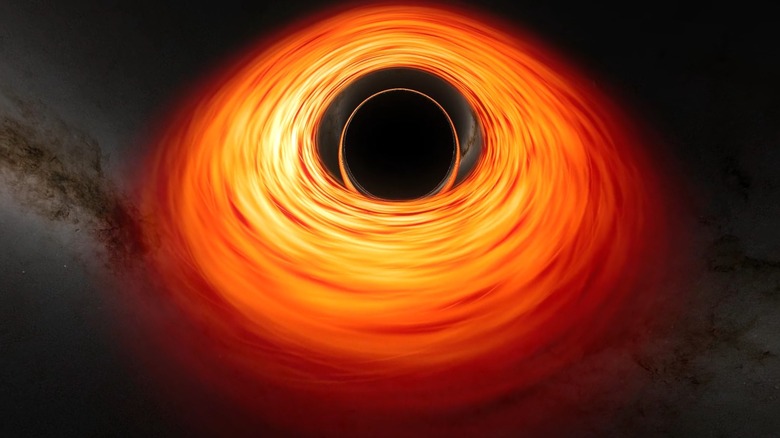This 360-Degree NASA Video Lets You Visualize Falling Into A Black Hole
In May 2024, NASA released a supercomputer-generated immersive 360-degree video visualization of how it would appear if you fell into a supermassive black hole – one with a mass 4.3 million times that of our Sun, similar to the supermassive black hole at the center of our Milky Way galaxy. It also released another simulation video of how it would appear if the observer flew around the same supermassive black hole, but didn't fall in. Two explainer videos were also made available, detailing what can be seen in the videos.
The two simulations were created by NASA Goddard Space Flight Center's Jeremy Schnittman and Brian Powell. The 360-degree videos were generated on the NASA Center for Climate Simulation's Discover supercomputer over the course of 5 days, using about 0.3% of its total processing capacity. Schnittman, explaining the rationale behind the videos, said "People often ask about this, and simulating these difficult-to-imagine processes helps me connect the mathematics of relativity to actual consequences in the real universe."
Schnittman added, "So, I simulated two different scenarios, one where a camera — a stand-in for a daring astronaut — just misses the event horizon and slingshots back out, and one where it crosses the boundary, sealing its fate [...] If you have the choice, you want to fall into a supermassive black hole. Stellar-mass black holes, which contain up to about 30 solar masses, possess much smaller event horizons and stronger tidal forces, which can rip apart approaching objects before they get to the horizon."
360-degree simulations of plunging into and flying by a black hole
The supermassive black hole has a 16-million-mile-wide event horizon, with videos starting 400 million miles away. The camera takes 3 hours to plunge into the event horizon, sped up for the video. En-route to the event horizon, the camera sees the black hole's "disk, photon rings, and the night sky become increasingly distorted — and even form multiple images as their light traverses the increasingly warped space-time," NASA explains in its blog post. Schnittman says, "Once the camera crosses the horizon, its destruction by spaghettification is just 12.8 seconds away." At light speed, the distance from the event horizon to the singularity (only about 79,500 miles), is covered in a fraction of a second.
In the second video (seen below), the camera flies by the black hole and passes near the event horizon at 60% the speed of light in a trajectory that ensures it slingshots away. The video shows a 6-hour round trip, sped up to create the one minute video. If the camera was an astronaut, time would pass much more slowly for them — 36 minutes slower – compared to an outside observer. NASA explains that this is because "time passes more slowly near a strong gravitational source and when moving near the speed of light."
If you want more details about what's shown in the two videos, check out NASA's plunging into a black hole explainer video and the flying by a black hole explainer video.
